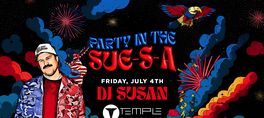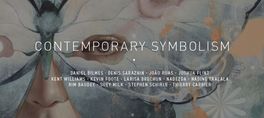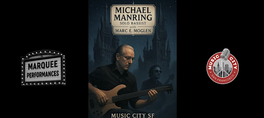Death is still forever, but extinction may not be---at least for creatures that humans drove extinct in the last 10,000 years. Woolly mammoths might once again nurture their young in northern snows. Passenger pigeon flocks could return to America’s eastern forest. The great auk may resume fishing the coasts of the northern Atlantic.
New genomic technology can reassemble the genomes of extinct species whose DNA is still recoverable from museum specimens and some fossils (no dinosaurs), and then, it is hoped, the genes unique to the extinct animal can be brought back to life in the framework of the genome of the closest living relative of the extinct species. For woolly mammoths, it’s the Asian elephant; for passenger pigeons, the band-tailed pigeon; for great auks, the razorbill. Other plausible candidates are the ivory-billed woodpecker, Carolina parakeet, Eskimo curlew, thylacine (Tasmanian tiger), dodo, Xerces blue butterfly, saber-toothed cat, Steller’s sea cow, cave bear, giant ground sloth, etc.
The Long Now Foundation has taken “de-extinction” on as a project called “Revive & Restore,” led by Ryan Phelan and Stewart Brand. They organized a series of conferences of the relevant molecular biologists and conservation biologists culminating in TEDxDeExtinction, held at National Geographic in March. They hired a young scientist, Ben Novak, to work full time on reviving the passenger pigeon. He is now at UC Santa Cruz working in the lab of ancient-DNA expert Beth Shapiro.
This talk summarizes the progress of current de-extinction projects (Europe’s aurochs, Spain’s bucardo, Australia’s gastric brooding frog, America’s passenger pigeon) and some “ancient ecosystem revival” projects---Pleistocene Park in Siberia, the Oostvaardersplassen in the Netherlands, and Makauwahi Cave in Kaua’i. De-extinction has been described as a “game changer” for conservation. How might that play out for the best, and how might it go astray?
In an era of “anthropocene ecology,” is it now possible to repair some of the deepest damage we have caused in the past?
Tuesday May 21, 02013
Doors open 7:00pm, talk at 7:30pm lasting ~1.5 hours
Advance Tickets Recommended - Tickets are $15
http://longnow.org/seminars/02013/may/21/reviving-extinct-species/
Long Now Members get complimentary tickets
https://longnow.org/membership/
Revive & Restore website
http://longnow.org/revive/
show less
New genomic technology can reassemble the genomes of extinct species whose DNA is still recoverable from museum specimens and some fossils (no dinosaurs), and then, it is hoped, the genes unique to the extinct animal can be brought back to life in the framework of the genome of the closest living relative of the extinct species. For woolly mammoths, it’s the Asian elephant; for passenger pigeons, the band-tailed pigeon; for great auks, the razorbill. Other plausible candidates are the ivory-billed woodpecker, Carolina parakeet, Eskimo curlew, thylacine (Tasmanian tiger), dodo, Xerces blue butterfly, saber-toothed cat, Steller’s sea cow, cave bear, giant ground sloth, etc.
The Long Now Foundation has taken “de-extinction” on as a project called “Revive & Restore,” led by Ryan Phelan and Stewart Brand. They organized a series of conferences of the relevant molecular biologists and conservation biologists culminating in TEDxDeExtinction, held at National Geographic in March. They hired a young scientist, Ben Novak, to work full time on reviving the passenger pigeon. He is now at UC Santa Cruz working in the lab of ancient-DNA expert Beth Shapiro.
This talk summarizes the progress of current de-extinction projects (Europe’s aurochs, Spain’s bucardo, Australia’s gastric brooding frog, America’s passenger pigeon) and some “ancient ecosystem revival” projects---Pleistocene Park in Siberia, the Oostvaardersplassen in the Netherlands, and Makauwahi Cave in Kaua’i. De-extinction has been described as a “game changer” for conservation. How might that play out for the best, and how might it go astray?
In an era of “anthropocene ecology,” is it now possible to repair some of the deepest damage we have caused in the past?
Tuesday May 21, 02013
Doors open 7:00pm, talk at 7:30pm lasting ~1.5 hours
Advance Tickets Recommended - Tickets are $15
http://longnow.org/seminars/02013/may/21/reviving-extinct-species/
Long Now Members get complimentary tickets
https://longnow.org/membership/
Revive & Restore website
http://longnow.org/revive/
Death is still forever, but extinction may not be---at least for creatures that humans drove extinct in the last 10,000 years. Woolly mammoths might once again nurture their young in northern snows. Passenger pigeon flocks could return to America’s eastern forest. The great auk may resume fishing the coasts of the northern Atlantic.
New genomic technology can reassemble the genomes of extinct species whose DNA is still recoverable from museum specimens and some fossils (no dinosaurs), and then, it is hoped, the genes unique to the extinct animal can be brought back to life in the framework of the genome of the closest living relative of the extinct species. For woolly mammoths, it’s the Asian elephant; for passenger pigeons, the band-tailed pigeon; for great auks, the razorbill. Other plausible candidates are the ivory-billed woodpecker, Carolina parakeet, Eskimo curlew, thylacine (Tasmanian tiger), dodo, Xerces blue butterfly, saber-toothed cat, Steller’s sea cow, cave bear, giant ground sloth, etc.
The Long Now Foundation has taken “de-extinction” on as a project called “Revive & Restore,” led by Ryan Phelan and Stewart Brand. They organized a series of conferences of the relevant molecular biologists and conservation biologists culminating in TEDxDeExtinction, held at National Geographic in March. They hired a young scientist, Ben Novak, to work full time on reviving the passenger pigeon. He is now at UC Santa Cruz working in the lab of ancient-DNA expert Beth Shapiro.
This talk summarizes the progress of current de-extinction projects (Europe’s aurochs, Spain’s bucardo, Australia’s gastric brooding frog, America’s passenger pigeon) and some “ancient ecosystem revival” projects---Pleistocene Park in Siberia, the Oostvaardersplassen in the Netherlands, and Makauwahi Cave in Kaua’i. De-extinction has been described as a “game changer” for conservation. How might that play out for the best, and how might it go astray?
In an era of “anthropocene ecology,” is it now possible to repair some of the deepest damage we have caused in the past?
Tuesday May 21, 02013
Doors open 7:00pm, talk at 7:30pm lasting ~1.5 hours
Advance Tickets Recommended - Tickets are $15
http://longnow.org/seminars/02013/may/21/reviving-extinct-species/
Long Now Members get complimentary tickets
https://longnow.org/membership/
Revive & Restore website
http://longnow.org/revive/
read more
New genomic technology can reassemble the genomes of extinct species whose DNA is still recoverable from museum specimens and some fossils (no dinosaurs), and then, it is hoped, the genes unique to the extinct animal can be brought back to life in the framework of the genome of the closest living relative of the extinct species. For woolly mammoths, it’s the Asian elephant; for passenger pigeons, the band-tailed pigeon; for great auks, the razorbill. Other plausible candidates are the ivory-billed woodpecker, Carolina parakeet, Eskimo curlew, thylacine (Tasmanian tiger), dodo, Xerces blue butterfly, saber-toothed cat, Steller’s sea cow, cave bear, giant ground sloth, etc.
The Long Now Foundation has taken “de-extinction” on as a project called “Revive & Restore,” led by Ryan Phelan and Stewart Brand. They organized a series of conferences of the relevant molecular biologists and conservation biologists culminating in TEDxDeExtinction, held at National Geographic in March. They hired a young scientist, Ben Novak, to work full time on reviving the passenger pigeon. He is now at UC Santa Cruz working in the lab of ancient-DNA expert Beth Shapiro.
This talk summarizes the progress of current de-extinction projects (Europe’s aurochs, Spain’s bucardo, Australia’s gastric brooding frog, America’s passenger pigeon) and some “ancient ecosystem revival” projects---Pleistocene Park in Siberia, the Oostvaardersplassen in the Netherlands, and Makauwahi Cave in Kaua’i. De-extinction has been described as a “game changer” for conservation. How might that play out for the best, and how might it go astray?
In an era of “anthropocene ecology,” is it now possible to repair some of the deepest damage we have caused in the past?
Tuesday May 21, 02013
Doors open 7:00pm, talk at 7:30pm lasting ~1.5 hours
Advance Tickets Recommended - Tickets are $15
http://longnow.org/seminars/02013/may/21/reviving-extinct-species/
Long Now Members get complimentary tickets
https://longnow.org/membership/
Revive & Restore website
http://longnow.org/revive/
show less
Date/Times:
SFJAZZ Center - SF Jazz
19 Upcoming Events
201 Franklin Street, San Francisco, CA 94102
The Best Events
Every Week in Your Inbox
From Our Sponsors
UPCOMING EVENTS
Great suggestion! We'll be in touch.
Event reviewed successfully.








